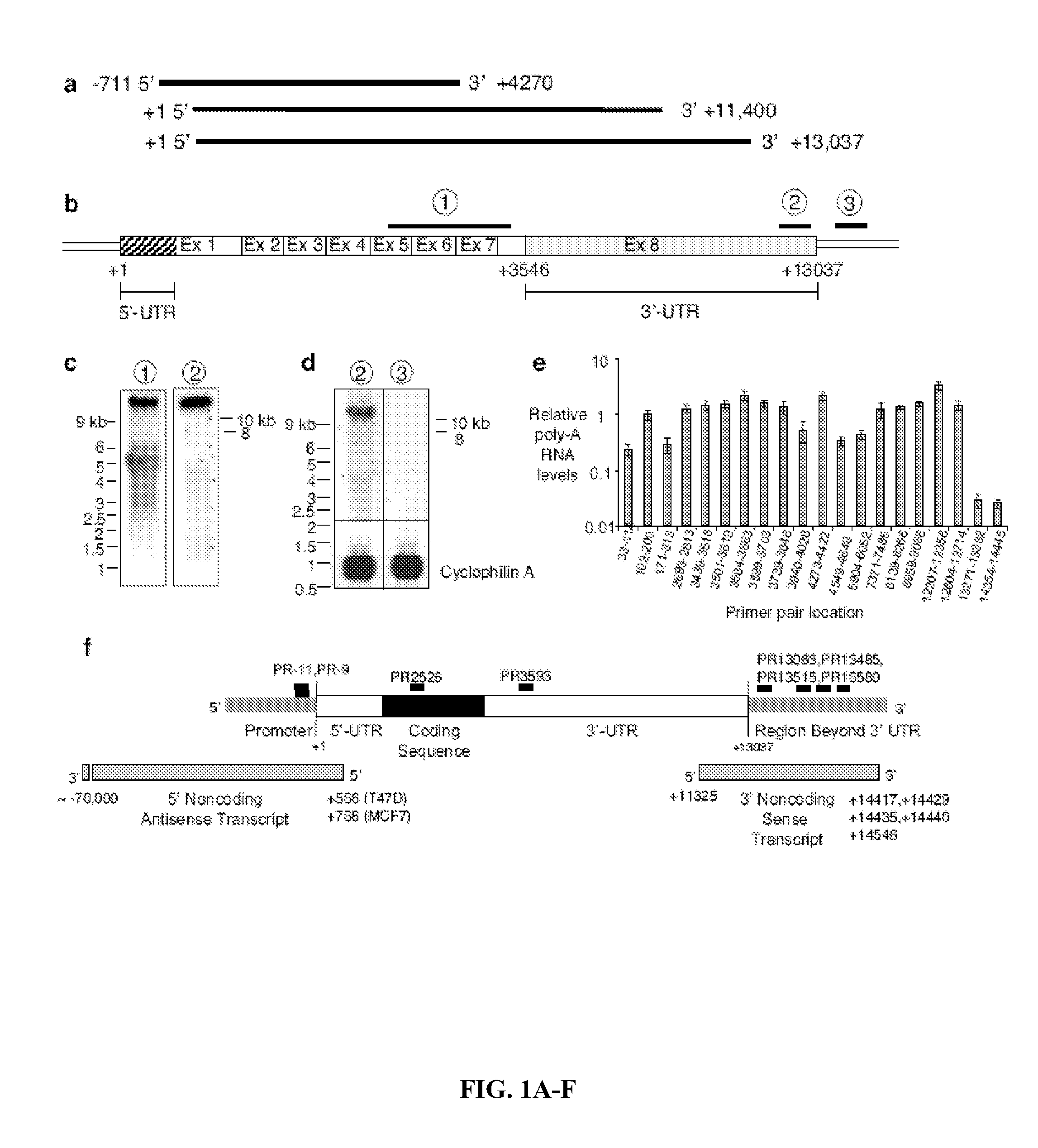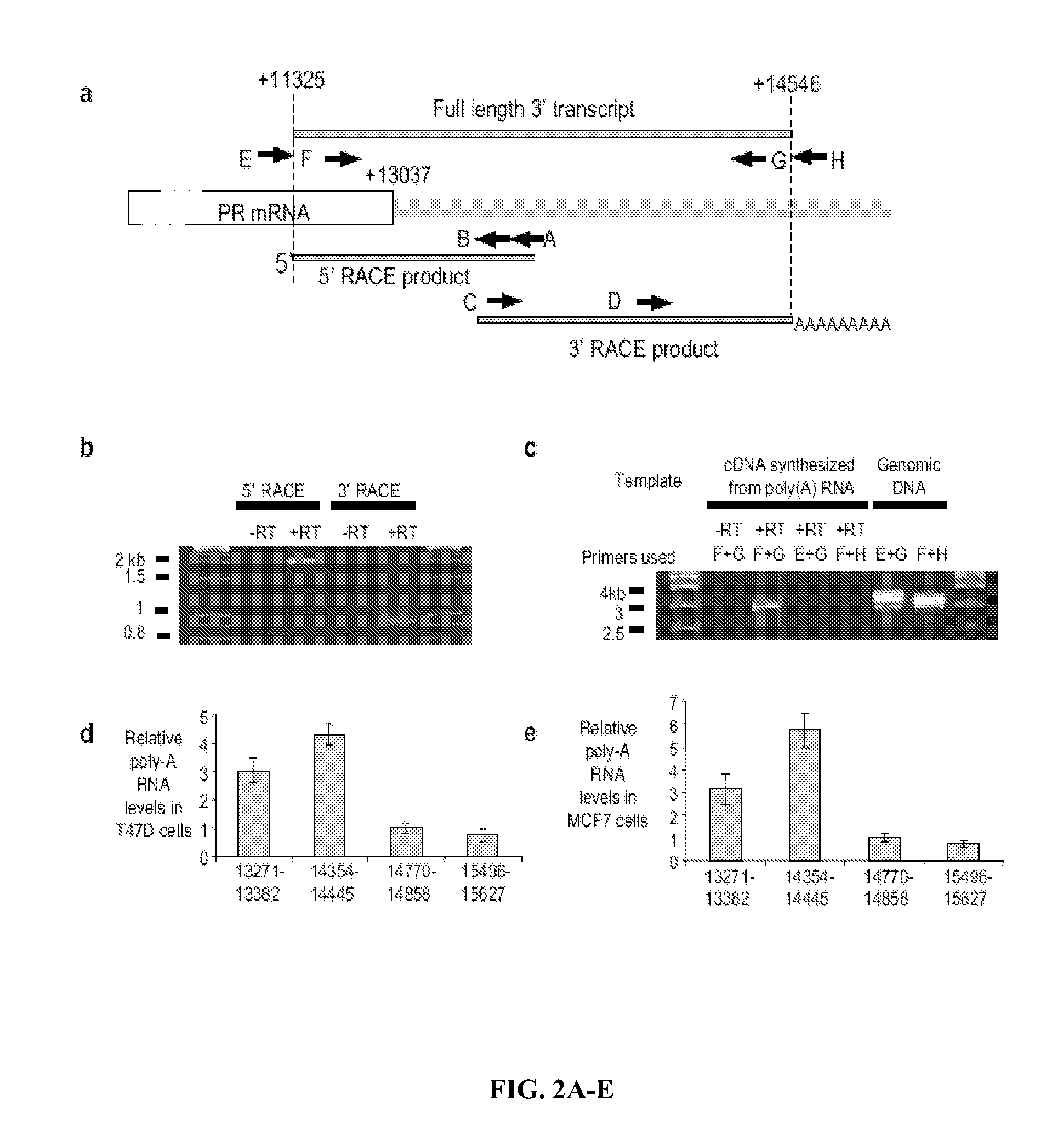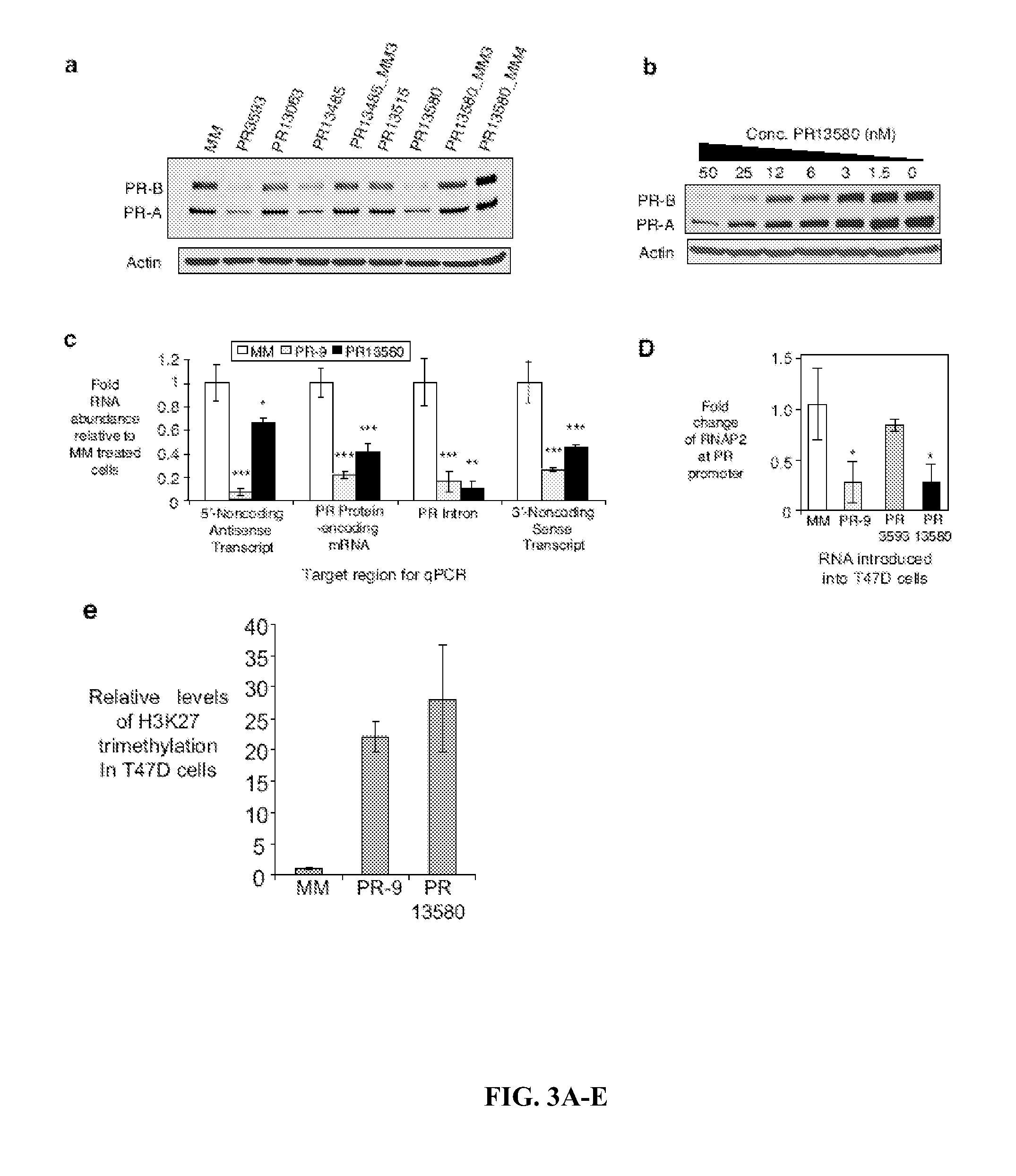Modulation of Gene Expression Using Oligomers That Target Gene Regions Downstream of 3' Untranslated Regions
- Summary
- Abstract
- Description
- Claims
- Application Information
AI Technical Summary
Benefits of technology
Problems solved by technology
Method used
Image
Examples
example 1
Materials & Methods
[0205]Maintenance and Treatment of Cultured Cells with Physiologic Stimuli. T47D, MCF7, and MDA-MB-2231 cells were cultured at 5% CO2 in RPMI media (Sigma) supplemented with 10% FBS (Atlanta Biologicals), 10 mM HEPES, 0.5% NEAA, 10 μg / mL insulin, and 1 mM sodium pyruvate (Sigma). For some experiments, T47D or MCF7 cells were cultured in media containing 5% dextran / charcoal-stripped FBS (Atlanta Biologicals) three days prior to treatment with either 17β-estradiol (E2) (Steraloids), epidermal growth factor (EGF) (Sigma), or interleukin-1β (Sigma). All cells were harvested for RNA following exposure to compound for 24 hours.
[0206]Cellular Delivery of Duplex RNAs and Expression Assays. The inventors used RNAi-max (Invitrogen) to deliver duplex RNAs (Supplementary Table S1) into MCF7 or T47D cells as described (Janowski et al., 2006b). Cells were seeded at 150,000 cells per well in a six-well plates and were transfected with duplex RNAs two days later. Cells were harve...
example 2
Results
[0220]Characterization of the PR 3′-UTR and Overlapping Transcripts. Working with agRNAs requires accurate identification of mRNA termini. Initially, however, the PR GenBank sequence had been inaccurately labeled with the 5′ end extended too far upstream and the 3′ terminus prematurely truncated (FIG. 1A, top). Northern analysis suggested lengths for PR mRNA variants19 but lacked a precise length for the largest variant (estimated to be 11.4 kB) (FIG. 1A, middle). A GenBank update based on a cluster of expressed sequence tags extended the 3′ UTR downstream to +13,037 (FIG. 1A, bottom).
[0221]The inventors performed northern analysis with probes complementary to i) the protein-encoding region of PR mRNA (probe 1), ii) the terminus of PR mRNA at +13,037 predicted by the recent GenBank update (probe 2), and iii) a region immediately downstream from the predicted +13,037 terminus (probe 3) (FIG. 1B). Probe 1 yielded major products at ˜5.5 kB and >10 kB, similar to results observed...
example 3
Discussion
[0256]RNA Recognition Beyond the 3′-UTR. The invenors data shows that duplex RNAs can modulate transcription by targeting sequences beyond the 3′ UTR. These results 1) expand the pool of RNA transcripts that can be targeted by small RNAs; 2) suggest that interactions encoded beyond the 3′ UTR can be important; 3) show that RNA-mediated recognition can control transcription over a 100,000 base distance; 4) are consistent with gene looping as an explanation for the long distance control of transcription by RNA; 5) demonstrate that agRNAs can counteract or supplement the effects of physiologic stimuli; 6) suggest that endogenous miRNAs complementary to sequences beyond the 3′ termini of genes can regulate gene transcription; and 7) uncover additional layers of regulation and gene structure at the PR locus. agRNAs that target the 5′ promoter region have similar effects on gene expression and involve the essential RNA binding protein AGO, suggesting that the mechanisms of 3′ ag...
PUM
| Property | Measurement | Unit |
|---|---|---|
| Fraction | aaaaa | aaaaa |
| Fraction | aaaaa | aaaaa |
| Fraction | aaaaa | aaaaa |
Abstract
Description
Claims
Application Information
 Login to View More
Login to View More - R&D
- Intellectual Property
- Life Sciences
- Materials
- Tech Scout
- Unparalleled Data Quality
- Higher Quality Content
- 60% Fewer Hallucinations
Browse by: Latest US Patents, China's latest patents, Technical Efficacy Thesaurus, Application Domain, Technology Topic, Popular Technical Reports.
© 2025 PatSnap. All rights reserved.Legal|Privacy policy|Modern Slavery Act Transparency Statement|Sitemap|About US| Contact US: help@patsnap.com



